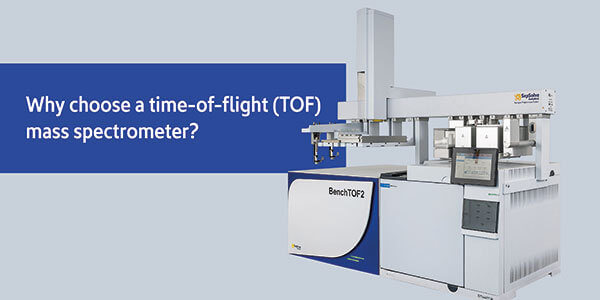
Modern labs must constantly adapt to cope with new analytical challenges and ever-increasing workloads, all while improving data confidence and reducing associated costs. This technical note highlights why time-of-flight mass spectrometry (TOF MS) is an ideal choice to address these challenges in both research and routine applications, by delivering fast, highly sensitive detection with full spectral information, for comprehensive sample characterisation in a single run.
Introduction
Gas chromatography coupled with mass spectrometry (GC–MS) is a powerful tool for the separation and characterisation of volatile organic compounds (VOCs) in solid, liquid or gaseous samples.
The fundamental role of the mass spectrometer is to identify the individual analytes in the sample mixture. It does this by ionising molecules as they elute from the GC, separating the ions based on their mass-to-charge ratio (m/z) and creating a unique fragmentation pattern that is recorded as a mass spectrum. The mass spectrum can be interpreted to uncover the identity of the compound – though nowadays, this process is automated using extensive commercially available spectral libraries.





